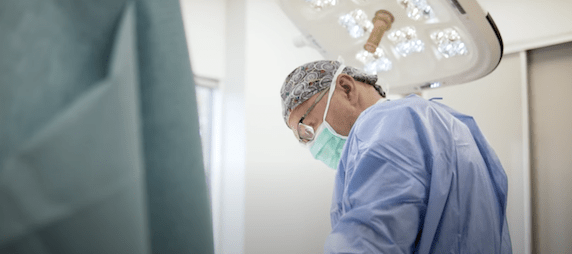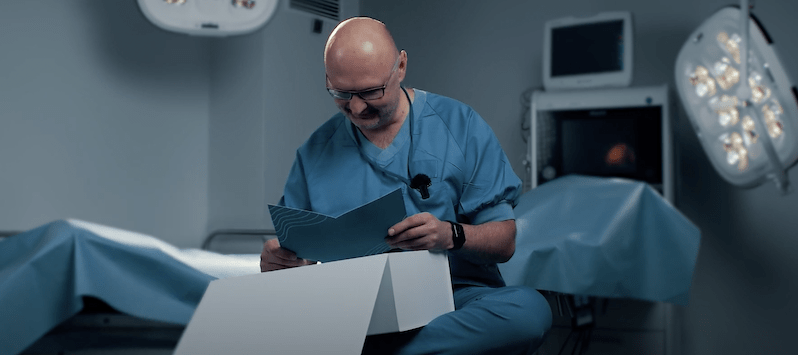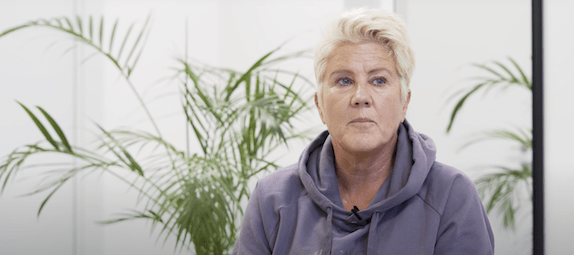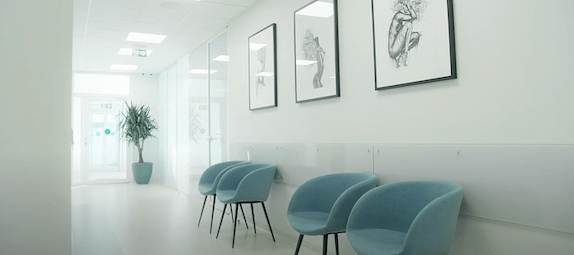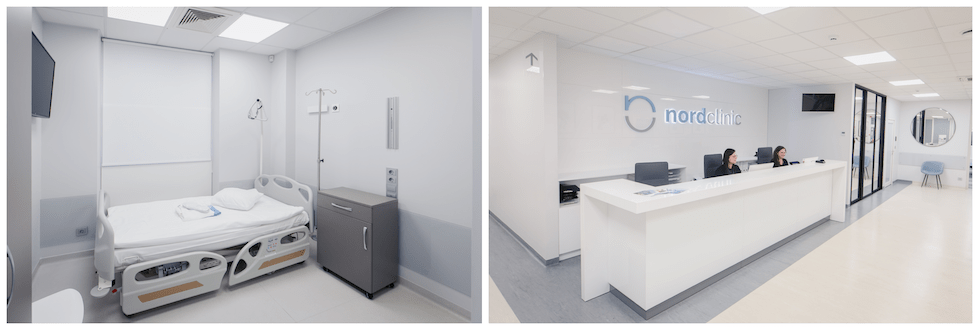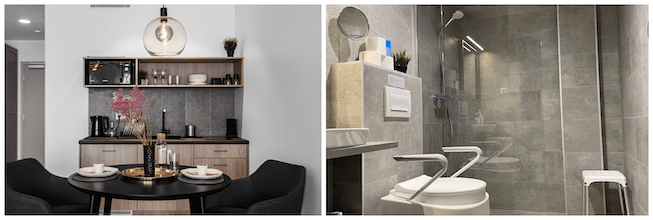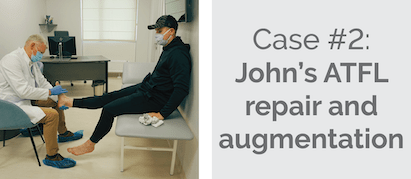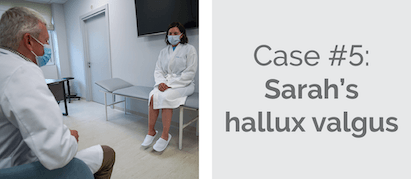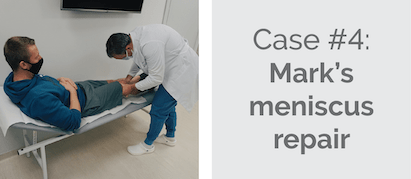Flat Foot Surgery
We are one of the leading orthopaedic surgery clinics for medical tourists in the European Union. We are proud of the fact that over 90 % of our patients come from the UK, Ireland, Norway, Sweden, the United States, Canada and other countries.
Reviews & Facebook group
Our patients and clinic in the media
Prices
- flat foot surgery (one foot)* – from 3.750 £
- heel bone (calcaneal) osteotomy – from 1.600 £
- tibial posterior reconstruction – from 2.250 €
- midfoot fusion – from 2.250 €
- all necessary tests ( X-ray and MRI performed in 1 day) – 230 £
Tests required to confirm surgery, which can be done in our clinic within 1 day: ankle X-ray (standing) and MRI.
*It is recommended to operate second foot after 6 months once the operated foot is fully prepared to withstand a double load.
- accommodation with medical care – from 62 £ per night
- consultation with the surgeon
- necessary health tests
- surgery
- implants
- anaesthesia
- hospitalisation
- 24/7 personal assistance during your stay
- transfers to / from the airport, hotel and clinic
- all documents translated to English
The price includes Hintegra and other highest quality implants. The implant option will be discussed in greater detail once the surgeon reviews your medical documentation.
Get your surgery for free by claiming a refund from your local health board. The clinic helps patients with the documents needed to claim a refund after following the EU directive route for medical treatment abroad. It applies to patients who are insured under the systems of one of the EU countries and may not get the surgery due to long waiting times.
- flat foot surgery (one foot)* – from 4.350 €
- heel bone (calcaneal) osteotomy – from 1.850 €
- tibial posterior reconstruction – from 2.250 €
- midfoot fusion – from 2.250 €
- all necessary tests ( X-ray and MRI performed in 1 day) – 270 €
Tests required to confirm surgery, which can be done in our clinic within 1 day: ankle X-ray (standing) and MRI.
*It is recommended to operate second foot after 6 months once the operated foot is fully prepared to withstand a double load.
- accommodation with medical care – from 74 € per night
- consultation with the surgeon
- necessary health tests
- surgery
- implants
- anaesthesia
- hospitalisation
- 24/7 personal assistance during your stay
- transfers to / from the airport, hotel and clinic
- all documents translated to English
The price includes Hintegra and other highest quality implants. The implant option will be discussed in greater detail once the surgeon reviews your medical documentation.
Get your surgery for free by claiming a refund from your local health board. The clinic helps patients with the documents needed to claim a refund after following the EU directive route for medical treatment abroad. It applies to patients who are insured under the systems of one of the EU countries and may not get the surgery due to long waiting times.
Patient stories
Clinic videos
Nordorthopaedics Center Of Excellence

Experienced ankle and foot surgeon V. Kimtys

- More than 20 years of working experience
- 500 ankle prosthetics performed
- 1.000 ankle fusion surgeries
- Read more
Refund for EU patients
Get your surgery for free by claiming a refund from your local health board. The clinic helps patients with the documents needed to claim a refund after following the EU directive route for medical treatment abroad. It applies to patients who are insured under the systems of one of the EU countries and may not get the surgery due to long waiting times. On average our patients from the EU countries get fully refunded by their local health board in 5 months after their surgeries.
Our clinic
Self-catered accommodation with medical care
11 reasons that make us the most popular orthopaedic clinic abroad
One of the most important factors for a quick and full recovery after surgery is proper rehabilitation. Usually, clinics are not able to offer this due to costs savings. Our patients can choose between two inpatient and outpatient options: rehabilitation with a physiotherapist of the Lithuanian national basketball team, prof. L. Siupsinskas or rehabilitation at a medical SPA.
Our team of 5 orthopaedic surgeons has 10-20 years of experience in the field in total performing over 1.000 different orthopaedic surgeries per year. Moreover, our surgeons are members of various prestigious surgical societies both Lithuanian and international. Our leading joint replacement surgeon S. Tarasevicius is an author of 150 scientific publications in different medical journals, who has performed more than 3.500 joint replacement surgeries during 15+ years of his professional experience.
We are one of the leading orthopaedic surgery clinics for medical tourists in the European Union. We are proud of the fact that over 90 % of our patients come from the UK, Ireland, Norway, Sweden, the United States, Canada and other countries.
One of the world’s leading medical technology companies and orthopaedic implant manufacturers, Smith & Nephew, have chosen Nordorthopaedics as Center of Excellence in the Baltic States.
We are trusted by our patients and we appreciate all the reviews and feedback collected over the years. Find more than 150 testimonials here or on Google.
Already more than 4.000 of our former, current and future patients joined our online community with the aim to build a space for opinions and mutual support. Members are welcome to share experiences about their visit to the clinic and to discuss all surgery-related matters. No other orthopaedic clinic can offer such group support.
Being a true member of the International Society of Arthroplasty Registries, Lithuania is one of the leaders in low joint replacement revision rates, as only 9% of surgeries in Lithuania require revision in 10 years after surgery. Moreover, with the implants used at our clinic, only 2-3% of surgeries require revision in 10 years after surgery, while revision rates in some other Western countries, for example, USA, is as high as 17% in 10 years after surgery. The implants used at our clinic have been evaluated by other countries’ registries as those ensuring longest implant life, as compared to products of other manufacturers. Moreover, thanks to our active participation in collecting data for the registries, the surgical technique used at our clinic ensures best surgical outcomes.
Our clinic is seen on different media mentions like: BBC News, BBC Radio, The Telegraph, MailOnline, Winnipeg Free Press, CTV News, CBC, RTE Radio, itv.
Our clinic works according to the highest standards set by the European Union. This helps to guarantee the quality of medical services. We care about the safety, comfort and successful results of our patients from all over the world.
The clinic helps patients with the documents needed to claim a refund after following the EU directive route for medical treatment abroad. It applies to patients who are insured under the systems of one of the EU countries and may not get the surgery due to long waiting times.
We provide customer service in 9 foreign languages including English, Swedish, Norwegian, Danish, Italian, Spanish, French, Russian, Polish. Everyone in our clinic speaks English, including nurses, assistants and the surgeon.
Athletes treated at Nordorthopaedics
Official clinic of Lithuania national football teams

Highest quality implants
Our clinic uses implants based on their performance in international registries.
Being a true member of the International Society of Arthroplasty Registries, Lithuania is one of the leaders in low joint replacement revision rates, as only 9% of surgeries in Lithuania require revision in 10 years after surgery. Moreover, with the implants used at our clinic, only 2-3% of surgeries require revision in 10 years after surgery, while revision rates in some other Western countries, for example, USA, is as high as 17% in 10 years after surgery. The implants used at our clinic have been evaluated by other countries’ registries as those ensuring longest implant life, as compared to products of other manufacturers. Read more here.
13 patients' case studies
What is a flat foot and what causes it?
Flat foot, also known as pes planus, is a common foot deformity. It is characterized by a flattened arch of the foot which comes in contact with the ground when standing and walking. The majority of people with flat feet do not experience any discomfort; however, as the deformity gets worse a flat foot can become very painful. Arch pain, muscle fatigue, heel pain, increasing deformity or ankle pain, are the most frequent symptoms. Not only is flat foot painful but it also makes it challenging to find comfortable shoes.
From an anatomical perspective, there are numerous underlying causes for flat feet. It is usually caused by excessive laxity of the ligaments, but may also be a result of several medical conditions, such as obesity, rheumatoid arthritis, diabetes, or trauma. When the arch-supporting ligaments and tendons overstretch, they fail to hold the bones in an anatomically correct position. One of the most important structures holding the foot is the tibialis posterior tendon. If it gets injured or becomes too loose, the foot arch will collapse. Other flatfoot causes include rearfoot equinus, arthritis, neuroarthropathy, and muscle imbalance.
What are the treatment options?
Flat feet affect multiple joints and require individualized care. The treatment can range from conservative care to surgical intervention, or a combination of both. Some patients respond well to just conservative management, while others with more severe deformities require surgical treatment.
Before considering surgery, all patients should first undergo conservative treatment. It entails patient education on biomechanical support (e.g. shoewear modification), home therapy (e.g. lower-foot stretching and strengthening exercises), and medication (anti-inflammatory drugs or corticosteroids). Studies show that as many as 87 % of patients do not require further surgical treatment.
Surgery is only indicated when conservative treatment has not helped in 3 months or more. There are many surgical techniques designed for different flat foot stages. Therefore, the exact surgical procedure is determined by the stage and condition of the deformity.
What is flat foot surgery?
Flat foot can be of different severity. Some people do not have any symptoms, while others experience pain, discomfort, and reduced mobility. In general, flat feet conditions can be flexible or rigid. In a flexible deformity, the arch is only seen when a patient stands on their tiptoes. In a rigid flat foot deformity, the arch is not present when standing normally or on the tiptoes. There are 4 flat foot stages that determine the exact treatment approach and surgical technique.
The first stage flat foot does not require surgical care and is mostly managed with conservative treatment.
The second stage (mild to moderate, flexible deformity) can be treated with several different surgical approaches, including calcaneal osteotomy, tendon transfer, or sinus tarsi implants.
The third stage (a highly progressed, fixed deformity) is usually corrected with joint fusion surgery. During bone fusion, bones of the feet are positioned correctly and fixed together. Proper bone alignment alleviates pain and provides good support for a whole body.
The fourth stage includes not only deformities of the feet, but also ankle deformities. The most common procedures include tendon transfer, ankle joint fusion, and others.
What does flat foot surgery involve?
Surgery is performed under general anaesthesia, meaning that the patient is unconscious and does not feel any pain. The foot is additionally injected with numbing medication to control pain once general anaesthesia wears off. The exact surgical approach varies from patient to patient. A surgical plan is discussed before the surgery, so the patient knows what to expect.
Firstly, a surgeon makes a few incisions in the foot and then reconstructs the bones, ligaments, and tendons. The two most common surgical techniques are tibialis posterior tendon reconstruction and calcaneal osteotomy. In tibialis posterior tendon reconstruction, the damaged tendon is replaced with a tendon graft, which is harvested from another muscle, like flexor digitorum longus. During calcaneal osteotomy, the bone of the heel is fixed in a correct position to provide better support for the foot arch. When the foot’s arch is restored, the surgeon closes the sutures and places the foot in a plaster cast to the knee.
FAQ about flat foot surgery with our surgeon
Recovery and rehabilitation after flat foot surgery
Immediately after flat foot surgery the patient is closely monitored by the hospital staff. The operated leg is placed in a plaster cast, numb and pain-free. The duration of the hospital stay depends on the patient’s health state. Before leaving the clinic, the patient is given a follow-up appointment, instructions on wound care, and painkillers (if required). Patients can expect to drive again 8 weeks after or when the doctor allows them to do so. Immediately after flat foot surgery the patient is closely monitored by the hospital staff. The operated leg is placed in a plaster cast, numb and pain-free. The duration of the hospital stay depends on the patient’s health state. Before leaving the clinic, the patient is given a follow-up appointment, instructions on wound care, and painkillers (if required). Patients can expect to drive again 8 weeks after or when the doctor allows them to do so.
During the first 2 weeks, the operated leg should be elevated for as long as possible. The plaster should be kept completely dry, but a patient can shower with a waterproof cover over the leg. The patient should not put weight on the leg, rest as much as possible, and walk with the crutches only when needed. After 2 weeks, there is a follow-up appointment to check on the wound and fit a new plaster cast or boot. After 6 weeks post-surgery, patients can wear their shoes with insoles and begin putting weight on the operated leg.
Patients with sedentary jobs can expect to return to work within 4 weeks. If their job involves physical work, it can take up to 12 weeks. Each patient has an individualized rehabilitation program that focuses on gait re-education (walking correctly) and stiffness prevention. The patients can either choose to exercise at home or in a clinic with a physiotherapist. With time, rehabilitation exercises advance to more difficult balance and strengthening exercises. During recovery, it is highly important to avoid smoking and taking anti-inflammatory medications since they prolong wound healing and increase complication risk.
What is the long-term impact of flat foot surgery?
Most patients return to their regular activities and sports within 6 months after surgery. Flat foot surgery improves weight distribution and alignment of the feet, so the patients no longer experience chronic pain and inflammation. In short, flatfoot surgery improves life quality and allows the person to live actively with no discomfort.
Send us your enquiry








